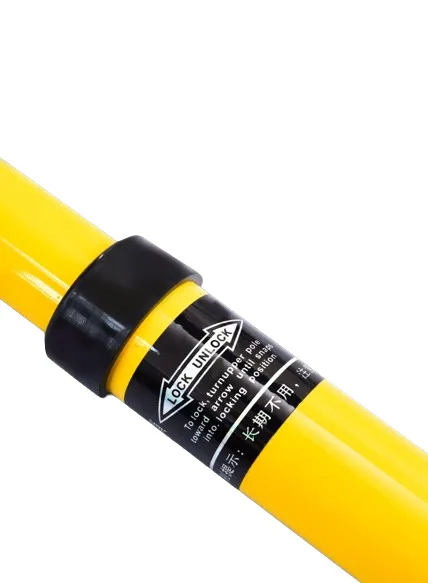
-
 Afrikaans
Afrikaans -
 Albanian
Albanian -
 Amharic
Amharic -
 Arabic
Arabic -
 Armenian
Armenian -
 Azerbaijani
Azerbaijani -
 Basque
Basque -
 Belarusian
Belarusian -
 Bengali
Bengali -
 Bosnian
Bosnian -
 Bulgarian
Bulgarian -
 Catalan
Catalan -
 Cebuano
Cebuano -
 Corsican
Corsican -
 Croatian
Croatian -
 Czech
Czech -
 Danish
Danish -
 Dutch
Dutch -
 English
English -
 Esperanto
Esperanto -
 Estonian
Estonian -
 Finnish
Finnish -
 French
French -
 Frisian
Frisian -
 Galician
Galician -
 Georgian
Georgian -
 German
German -
 Greek
Greek -
 Gujarati
Gujarati -
 Haitian Creole
Haitian Creole -
 hausa
hausa -
 hawaiian
hawaiian -
 Hebrew
Hebrew -
 Hindi
Hindi -
 Miao
Miao -
 Hungarian
Hungarian -
 Icelandic
Icelandic -
 igbo
igbo -
 Indonesian
Indonesian -
 irish
irish -
 Italian
Italian -
 Japanese
Japanese -
 Javanese
Javanese -
 Kannada
Kannada -
 kazakh
kazakh -
 Khmer
Khmer -
 Rwandese
Rwandese -
 Korean
Korean -
 Kurdish
Kurdish -
 Kyrgyz
Kyrgyz -
 Lao
Lao -
 Latin
Latin -
 Latvian
Latvian -
 Lithuanian
Lithuanian -
 Luxembourgish
Luxembourgish -
 Macedonian
Macedonian -
 Malgashi
Malgashi -
 Malay
Malay -
 Malayalam
Malayalam -
 Maltese
Maltese -
 Maori
Maori -
 Marathi
Marathi -
 Mongolian
Mongolian -
 Myanmar
Myanmar -
 Nepali
Nepali -
 Norwegian
Norwegian -
 Norwegian
Norwegian -
 Occitan
Occitan -
 Pashto
Pashto -
 Persian
Persian -
 Polish
Polish -
 Portuguese
Portuguese -
 Punjabi
Punjabi -
 Romanian
Romanian -
 Russian
Russian -
 Samoan
Samoan -
 Scottish Gaelic
Scottish Gaelic -
 Serbian
Serbian -
 Sesotho
Sesotho -
 Shona
Shona -
 Sindhi
Sindhi -
 Sinhala
Sinhala -
 Slovak
Slovak -
 Slovenian
Slovenian -
 Somali
Somali -
 Spanish
Spanish -
 Sundanese
Sundanese -
 Swahili
Swahili -
 Swedish
Swedish -
 Tagalog
Tagalog -
 Tajik
Tajik -
 Tamil
Tamil -
 Tatar
Tatar -
 Telugu
Telugu -
 Thai
Thai -
 Turkish
Turkish -
 Turkmen
Turkmen -
 Ukrainian
Ukrainian -
 Urdu
Urdu -
 Uighur
Uighur -
 Uzbek
Uzbek -
 Vietnamese
Vietnamese -
 Welsh
Welsh -
 Bantu
Bantu -
 Yiddish
Yiddish -
 Yoruba
Yoruba -
 Zulu
Zulu


Oct . 14, 2024 04:44 Back to list
Hydraulic Lugs Punch for Efficient Metal Fabrication and Assembly Solutions
Understanding Hydraulic Lugs Punch A Comprehensive Guide
Hydraulic lugs punch systems have become essential tools in various industrial applications, particularly in metalworking, sheet metal fabrication, and automotive manufacturing. These systems are designed to create precise holes, shapes, and forms in metal sheets, providing both efficiency and accuracy. This article delves into the intricacies of hydraulic lugs punch systems, their operational mechanisms, advantages, and typical applications.
What is a Hydraulic Lugs Punch?
A hydraulic lugs punch is a specialized machine that utilizes hydraulic power to exert force for punching holes or shapes in a variety of materials, predominantly metals. The term lugs refers to the protruding parts or fixtures on the punched material, which serve various functional purposes depending on the application. The hydraulic system operates on the principle of Pascal's law, which states that pressure applied to a confined fluid is transmitted undiminished throughout the fluid.
Operational Mechanism
The hydraulic lugs punch operates through a series of well-coordinated mechanical components. The core of the system is the hydraulic cylinder, which is filled with hydraulic fluid. When the hydraulic pump activates, it forces the fluid into the cylinder, pushing the piston forward. This movement generates substantial pressure, which is harnessed to drive the punch against the material being processed.
A typical punching operation involves
1. Material Placement The metal sheet or material is securely positioned underneath the punch mechanism. 2. Punch Activation Upon activation, the hydraulic system delivers a powerful force that drives the punch tool through the material. 3. Hole Creation The punch cleanly cuts through the material, creating a hole or designated shape. This process can be adjusted to accommodate different punch sizes and shapes.
4. Completion Once the punch cycle is completed, the hydraulic system retracts, allowing for the removal of the finished product.
Advantages of Hydraulic Lugs Punch Systems
Hydraulic lugs punch systems offer several advantages, making them a preferred choice in many industries
hydraulic lugs punch

1. High Force Generation The hydraulic system can produce a tremendous amount of force, enabling it to punch through thick materials that may be challenging for mechanical systems.
2. Precision and Reproducibility These systems are capable of delivering high precision, ensuring that the holes and shapes produced are consistent and meet exact specifications.
3. Versatility Hydraulic punches can be used on a wide range of materials, from soft metals like aluminum to harder metals such as stainless steel.
4. Ease of Use Many hydraulic punch systems are designed to be user-friendly, with computerized controls that simplify operation and improve productivity.
5. Reduced Wear and Tear The hydraulic mechanism can operate at lower speeds than mechanical counterparts, leading to less wear on tools and components, thus extending the lifespan of the equipment.
Typical Applications
Hydraulic lugs punch systems are widely used across various sectors, including but not limited to
- Automotive Manufacturing For creating holes for fasteners, brackets, and other components necessary in vehicle assembly. - Aerospace Industry For producing lightweight, aerodynamic components that require precise hole placement and dimensions. - Construction In the fabrication of metal structures where accuracy and strength are paramount. - Electrical Industry To punch cable entry holes and customize component housing.
Conclusion
The hydraulic lugs punch represents an integral piece of machinery in the modern industrial landscape, showcasing the intersection of power, precision, and versatility. As technology advances, these systems continue to evolve, integrating smart controls and enhanced capabilities, further solidifying their place in manufacturing and fabrication processes. Understanding the functionalities and applications of hydraulic lugs punches is crucial for businesses looking to optimize their operations and improve their production quality.
Latest news
What Are Construction Tools and How Are They Used?
NewsJul.11,2025
Professional-Grade Duct Rodding Tools for Superior Cable Installation
NewsJul.11,2025
Enhancing Safety and Efficiency with Modern Hot Stick Solutions
NewsJul.11,2025
Empowering Cable Installation with Advanced Rodder Solutions
NewsJul.11,2025
Elevate Your Cable Installation Projects with Cable Pulling Tools
NewsJul.11,2025
Efficient Cable Handling Solutions: Cable Rollers for Sale
NewsJul.11,2025











